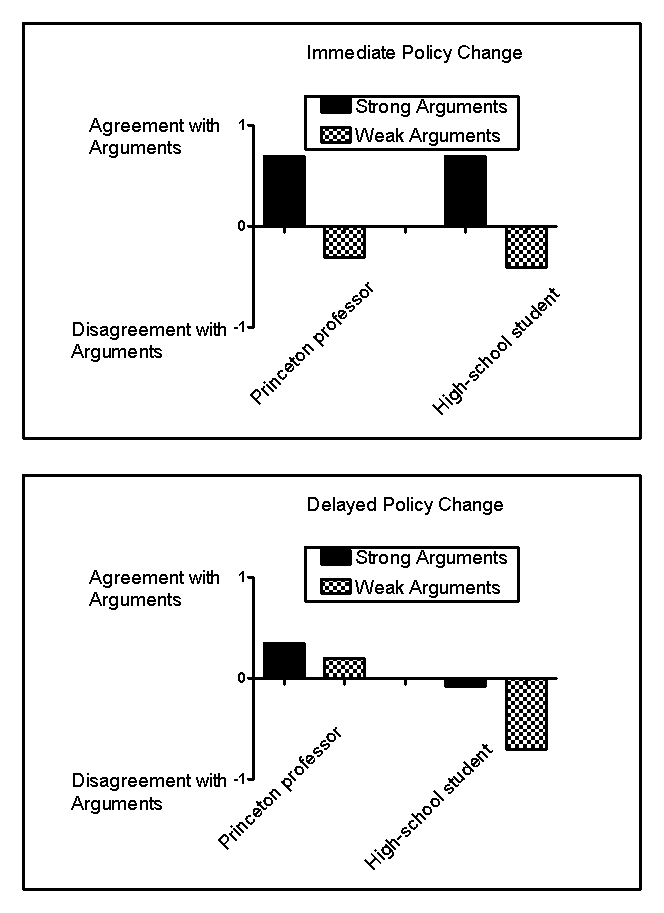Use the following to answer questions
Scenario II
The following scenario contains fabricated results consistent with the following study:
Petty,R.E. ,Cacioppo,J.T. ,& Goldman,R.(1981) .Personal involvement as a determinant of argument-based persuasion.Journal of Personality and Social Psychology,41,847-855.
Every day,consumers are exposed to scientifically based sales,marketing,and public relations strategies designed to influence purchasing decisions,change opinions,or win votes.One common sales strategy is the foot-in-the-door technique,a method that involves first making a smaller request that consumers are likely to grant and then following it with a larger request.Another common strategy is the door-in-the-face technique,which involves making an unreasonably large request that consumers will reject and then following it with a smaller request.When persuasion is necessary,it usually takes one of two forms: heuristic persuasion,which involves an appeal to habits or emotion,and systematic persuasion,which involves an appeal to facts and reason.Often,people will rely more on heuristics-simple shortcuts or "rules of thumb"-to make decisions instead of systematically weighing the evidence.
Petty and colleagues (1981) investigated some of these techniques in college students listening to arguments in favor of their college requiring an institution-level comprehensive final examination for graduation.Some students were led to believe that,if adopted,this policy would take place right away,and some were led to believe that the change would take place in a decade.In addition,some of the students were led to believe that they were listening to an argument from a Princeton professor,and others were led to believe that they were listening to an argument from a high-school student.Finally,some students heard strong arguments in favor of the policy,and some heard weak arguments.Thus,the experiment arranged six groups of students.For example,one group of students heard strong arguments from a high-school student about a far-removed policy change.Figure 13.1 shows fabricated results illustrating the major findings of this experiment.
Figure 13.1 
-(Scenario II) Which example describes systematic persuasion?
Definitions:
P/E Ratio
The ratio for valuing a company that measures its current share price relative to its per-share earnings.
Financial Statements
Official records outlining the financial activities and condition of a business or entity, including the balance sheet, income statement, and cash flow statement.
Common Shares
Equity ownership units in a corporation that entitle holders to voting rights and potential dividends.
Return On Equity Ratio
A measure of financial performance calculated by dividing net income by shareholders' equity, indicating how well a company uses investments to generate earnings growth.
Q7: Brain activation in response to threat occurs
Q41: A high testosterone level in males is
Q43: Existentialists believe that angst occurs when stressos
Q72: According to Freud's psychosexual stages of personality
Q79: Based on recent research,you might expect more
Q94: Which statement about the relationship between religious
Q115: The study of the causes and consequences
Q157: Among people who have just had heart
Q167: About what percentage of 40-year-old Americans have
Q246: A drawback to self-report questionnaires is that:<br>A)they